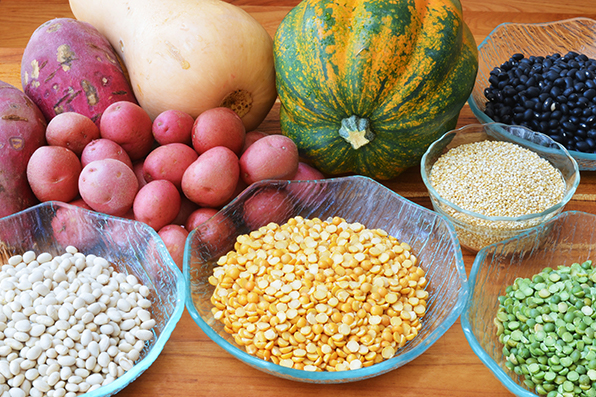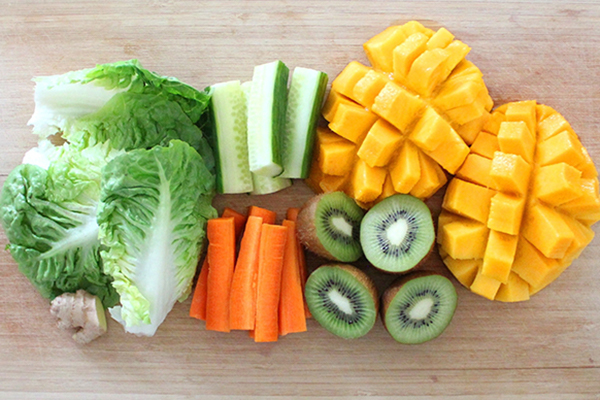A calorie is not a calorie and the advice to simply burn more calories than you take in just doesn’t work. While being aware of calories and other macronutrient numbers is important, there is more to the puzzle. Focusing on the quality of food, not just the quantity, is key to achieving optimal health and wellness.
The old saying “you are what you eat” not only applies to the food you consume but also to what your food consumes or how it was grown. How the animal was raised, the plant was grown or the food was processed plays a huge role in its nutrient density.
In shifting the focus to food quality, overall eating experiences also tend to be enhanced. When you choose less processed, higher quality food, you’re more mindful of how you’re eating not just what you’re eating. This allows you the opportunity to be more present while eating, chew food more thoroughly and truly savor the experience.
Nutrients over numbers, shifting the focus to food quality #qualitycounts #SASlife Click To TweetIs it Worth It?
High quality, minimally processed foods can cost more up front than their ultra processed, conventionally raised counterparts. However, there are plenty of ways to stretch your food funds and make higher quality foods a reality on any budget – shopping on sale, buying in bulk, visiting local farms and farmer’s markets, etc.
Plus, these higher quality foods have more nutrients, improved fatty acid profiles and less antibiotics and pesticides – a big win in the long run for health and avoided medical costs and medication side effects.
Making the Switch
Making the move away from processed foods can be challenging and won’t happen overnight. Do your best to plan well-balanced meals and snacks and slowly chip away at incorporating more grass-fed, organic, sustainable choices as budget and availability allows. Decide what’s most important to you, what will realistically work with your budget and lifestyle, and build from there.
Proteins
- BEST CHOICE: Look for grass-fed beef, pasture-raised eggs and poultry and wild-caught sustainable seafood that are chemical, antibiotic and hormone free. Buy what’s available and learn how to cook different cuts of meat, if necessary. If you have room in your budget, buy extra and freeze for later (especially when you find it on sale!). Even at $5 a dozen, organic and pasture-raised eggs are still one of the cheapest sources of protein. Plant-based proteins like beans, lentils and organic, non-GMO tofu, tempeh and edamame are other great protein options.
- GOOD CHOICE: If you can’t afford or find grass-fed, pasture-raised meat, get ruminant animals (beef, lamb, goat, bison, venison), fish and eggs first; chicken and pork second. Buy the leanest cuts available and trim away excess fat or skin before eating.
- LIMIT: Bypass most processed meats like bacon, sausage and deli meat. Try making them yourself at home or seek out cleaner brands that use higher quality ingredients and don’t contain additives or other undesirable ingredients (i.e., nitrates, nitrites, added sugar, etc.).
Carbohydrates
- BEST CHOICE: Opt for nutrient dense, minimally processed carbohydrates from intact grains, starchy vegetables, whole fruits, legumes, milk and yogurt which are naturally high in fiber, vitamins and minerals.
- LIMIT: Bypass most refined, processed carbohydrates (candies, cookies and other sweets; products made with white flour – bread, pasta, pancakes, muffins, crackers, etc.; white rice; sweetened cereals; etc.) which have been stripped of fiber and nutrients and can negatively impact health.
Fats
- BEST CHOICE: Look for whole food sources of fats like raw nuts and seeds, natural nut and seed butters with no added sugar or oils, avocado, olives, tahini, cold pressed oils (olive or avocado), coconut oil and organic, grass-fed butter and ghee. When you have a few spare dollars or find things on sale, stock up on olive oil, avocado oil, coconut oil and organic, grass-fed butter or ghee. These can be a bit pricier but go a long way.
- LIMIT: Bypass industrially processed oils extracted from soybeans, corn, rapeseed (source of canola oil), cottonseed and safflower seeds in addition to high oleic and certain types of palm oil which undergo extensive heat and chemical processing that cause the fats to become damaged and oxidized. Also avoid margarine, buttery spreads and shortening as well as deep fried foods and be sure to not overheat oils to their smoking point when cooking at home.
Produce
- BEST CHOICE: Opt for local fresh or frozen vegetables and fruits with no additives – these will be the most nutritious and least expensive. The Environmental Working Group researches and compiles data about the pesticide content of produce and publishes a shopper’s guide annually. Use these Dirty Dozen and Clean Fifteen lists to help you determine whether or not to buy organic.
- LIMIT: Bypass dried or frozen fruits and vegetables that contain added sugar or other additives.
Southwest Chicken Soup
Recipe adapted from Against All Grains
Makes 6 Servings
PRINT RECIPE

Ingredients
2lbs boneless skinless chicken thighs
3 medium sweet potatoes
4 whole carrots
2 tsp fresh lime juice
1 tsp minced garlic
2 cups salsa
4 cups chicken or vegetable broth
salt and pepper, to taste
2 cups chopped fresh spinach and/or kale
Garnish: chopped cilantro and/or diced avocado (optional)
Directions
-
Peel and cube sweet potatoes (peeling is optional), slice carrots and, if needed, chop spinach/kale.
Instant Pot Method
-
Place chicken, cubed sweet potatoes, sliced carrots, lime juice, garlic, salsa, chicken broth, salt and pepper in Instant Pot.
-
Secure and lock lid. Set valve to the Sealing Position.
-
Press the Soup button and set to 35 minutes for frozen chicken or 15 minutes for fresh chicken. If you do not have a Soup button, select High pressure for 35 minutes.
-
When the timer beeps, release pressure manually until the float valve drops and then open the lid.
-
Remove chicken and shred using 2 forks.
-
Scoop out 1 cup of the veggies/broth and using a stick or immersion blender, blend the remaining soup in the pot until smooth.
-
Add shredded chicken and reserved veggies back to the pot along with spinach and/or kale. Stir until combined and the spinach/kale is slightly wilted.
-
Adjust seasonings with salt and pepper if needed and serve with cilantro and/or avocado if desired.
Stove Top Method
-
Place chicken, cubed sweet potatoes, sliced carrots, lime juice, garlic, salsa, chicken broth, salt and pepper in a stockpot over medium-high heat.
-
Bring to a boil, cover, reduce heat to medium-low and simmer for 1 hour.
-
Remove chicken and shred using 2 forks.
-
Scoop out 1 cup of the veggies/broth and using a stick or immersion blender, blend the remaining soup in the pot until smooth.
-
Add shredded chicken and reserved veggies back to the pot along with spinach and/or kale. Simmer for 10 minutes or until the spinach/kale is slightly wilted.
-
Adjust seasonings with salt and pepper if needed and serve with cilantro and/or avocado if desired.
Slow Cooker Method
-
Place chicken, cubed sweet potatoes, sliced carrots, lime juice, garlic, salsa, chicken broth, salt and pepper in a slow cooker.
-
Place lid on slow cooker and cook on Low for 6 hours.
-
Remove chicken and shred using 2 forks.
-
Scoop out 1 cup of the veggies/broth and using a stick or immersion blender, blend the remaining soup in the pot until smooth.
-
Add shredded chicken and reserved veggies back to the pot along with spinach and/or kale. Stir until combined and the spinach/kale is slightly wilted.
-
Adjust seasonings with salt and pepper if needed and serve with cilantro and/or avocado if desired.






